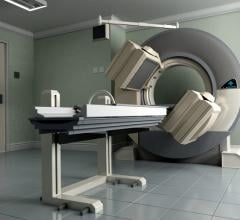August 1, 2007 - Positron Corp. announced that a recent study by The State University of New York at Buffalo reveals that Positron Emission Tomography (PET) scanning when used as the first tool to diagnose heart-vessel blockages, is more accurate, less invasive and cost effective than SPECT imaging.
The research findings, published in the July edition of the Journal of Nuclear Medicine, support PET scanning as the initial diagnostic test for assessing a patient's risk of heart attack, according to lead researcher Michael Merhige, M.D., UB clinical associate professor of nuclear medicine and Director of the Heart Center of Niagara at Niagara Falls Memorial Medical Center.
"Because PET scanning is more accurate and provides a clearer picture of the state of the heart than conventional SPECT imaging, we found a decrease in the use of angiograms and bypass surgery by more than 50 percent if used as the first-line test with patients when all too often it is the last test," indicated Dr. Merhige.
The study also says that invasive procedures such as coronary arteriography, coronary bypass surgery and stent implantation are over utilized in the U.S., as false readings from SPECT require unnecessary angiograms, for example, that turn out to be normal. PET, however, does not produce as many false positives or false negatives because the images have higher resolution and better contrast, noted Dr. Merhige.
For more information: www.positron.com


 June 05, 2023
June 05, 2023 






